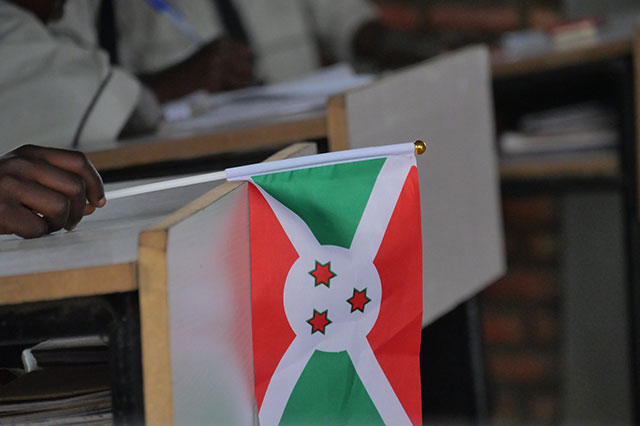Burundi – She is 60 years old, but Laetitia Ngendakumana still cries like the 10-year-old girl she was in 1972 when her father disappeared in a wave of ethnic massacres in Burundi now classified as genocide by a government commission.
Like thousands of others, Ngendakumana’s world collapsed half a century ago when Burundi’s Tutsi-dominated government arrested her father, a Hutu banker in the country’s largest city, Bujumbura.
“We never knew where they took dad. What I know is that we lost everything we had,” she said, wringing her hands during an interview with AFP at her home surrounded by lush banana trees near Gitega, Burundi’s political capital.
Neither her marriage to a teacher nor the birth of their 14 children – 12 survived – nor an end to the bloodletting erased her pain, which feels as fresh today as it did in 1972.
For a long time, the massacres were a taboo subject in the public sphere, with Burundians referring to the period between the end of April and June 1972 as “ikiza” (“the scourge” in Kirundi, the country’s official language).
ALSO READ: Albino child dismembered in Burundi, association says
But in 2019, a Truth and Reconciliation Commission (TRC) set up by the authorities announced a plan to reopen mass graves to count and possibly identify the victims.
Ngendakumana immediately reached out to the commission.
Identifying human remains after five decades was a near-impossible task, but the farmer clung to a single hope: her father’s dentures.
“My father had had an accident and lost his teeth. He was wearing gold prostheses,” she said.
The tip about the metal dentures led the investigators to discover her father’s remains, which were found on a wooded hillside, just a few kilometres (miles) from her home near Gitega.
‘The state killed its people’
Since independence in 1962, hundreds of thousands of Burundians have lost their lives to ethnic violence between the Hutu and the Tutsi, and to a civil war.
The 1972 massacres – seen by some as the darkest chapter in Burundi’s history began on April 29, when Hutu extremists attacked Tutsis living mainly in the country’s south.
This was followed by reprisals that quickly escalated into massacres of the Hutu elite, including executives, teachers and school students.
An estimated 100 000 to 300 000 people died in the violence – the majority of the Hutu, who account for 85% of Burundi’s population, with the Tutsi at 14%.
ALSO READ: Burundi commission says 1972 Hutu killings were genocide
The killings engulfed the entire country, but Gitega was the epicentre, hosting a military camp where the victims were held in transit before being killed and dumped in pits.
Out of the nearly 20 000 victims whose remains were exhumed across Burundi, an estimated 7 000 were found in nine mass graves in and around Gitega.
Many graves have never been found.
“When we say 7 000 victims, it is only in relation to the graves that we have already found, confirmed, exhumed,” the TRC’s chairman Pierre Claver Ndayicariye told AFP.
After a three-year investigation, the TRC last December published a provisional report saying that the killings amounted to genocide and crimes against humanity.
“In 1972, the state killed its people,” Ndayicariye said, emphasising the role played by then-president Michel Micombero, an ethnic Tutsi, in orchestrating the massacres.
“It is a genocide because the state planned, organised, carried out this genocide,” he said.
‘Political agenda’
But his views are not unanimous, with some observers accusing the current Hutu-dominated regime of exploiting the TRC to further its own aims.
The TRC – whose members mostly belong to the ruling party has faced allegations of bias for largely focusing its excavations on sites where Hutus were buried while ignoring the graves of Tutsi victims.
ALSO READ: Burundi vows to probe deadly ‘terrorist’ grenade blasts
“There is actually a problem of political agenda in this story,” historian Evariste Ngayimpenda told AFP, deploring the tendency of successive governments to play the ethnic card.
“When the Tutsi were in power… the avoidance of the Hutu menace was a constant theme and today, it is the opposite, it is the avoidance of the Tutsi menace, which is also a constant theme”.
According to the rector of the Bujumbura-based University of Lake Tanganyika, the TRC’s efforts also exhibit “methodological shortcomings” with regard to the dating of graves and the absence of any recourse to international expertise, particularly that of the United Nations.
As the 50th anniversary of the massacres approaches, skulls, bones and bags of tattered clothing found near Gitega lie piled up in a small dark room inside a government building, awaiting the day when they will become part of a public memorial.
Although the authorities have not announced any plans to mark the anniversary, Ngendakumana and her husband, Emmanuel Berakumenyo, hope their government will seize the opportunity to heal the country’s painful past.
“These are conflicts that may draw to an end little by little, but the administration must lend a hand,” said Berakumenyo, a former teacher who survived the massacres.
Follow African Insider on Facebook, Twitter and Instagram
Source: AFP
Picture: Facebook / Great Lakes Outreach
For more African news, visit Africaninsider.com


